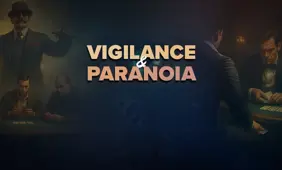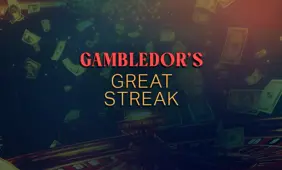Marked Cards – Deck Alteration and Ways to Spot Markings

In the Marked Deck Basics article, I shared details on the types of marked cards that exist and how modern technology has elevated the marked deck to something that might break any game with very little skill or experience. While these high-tech methods exist and can be bought for a few thousand dollars, the ability to use such advantages without detection is far from easy to acquire, and as any cheater will tell you, marking the cards is easy; the hard part is getting them into any game you hope to beat.
In the past, gambling supply catalogs would feature pages of crooked gaming devices that could guarantee an unfair edge against dice players, carnival-goers, and casino gamblers. Included in many of these catalogs were pages dedicated to marked cards featuring illustrations of popular back designs that had been marked in some fashion to offer an unbeatable edge for any game of your choosing.
Many of these decks employed “block out work” where a deck would be carefully opened without breaking the seal, then the backs painted with special inks to slightly adjust the pre-printed back design. These marks were made according to a number of systems and might denote high cards or low cards, suits, or even suit and value.
However, the more information these marks needed to convey, the less practical they became, both in ease of reading and subtlety. A few slightly enlarged dots on certain cards is enough to gain an advantage for professionals, whereas more complex markings that reveal an exact card might be more attractive to less experienced players but are a lot easier to detect.
These catalogs probably sold a lot more of these overly-marked decks, which probably cost the buyers more than they would lose playing on the square since the ability to pick off (see) a mark takes experience and nerve but to read two or three marks in various places on one back design (and for multiple cards) is just impossible to do without looking like you are activating some sort of x-ray vision!
Do Card Marking Systems Work?
The truth is that most marked decks went unused (and unread) once buyers realized how hard it is to see a tiny variation in design from across the table, at an angle, while cards are moving or hidden by hands, other cards, chips, or drinks.
That’s the thing people don’t understand about professional casino cheating - the smart work secures an edge but requires practice and experience - the easier a gaffed deck is to use, the more likely it is to get nailed by suckers before the game is over. Ask any magician who performs card tricks, and they’ll confirm that people often check their cards for markings (though most people don’t know how to check for this type of marked deck*). If that happens in a game and the cards are found to be painted, the repercussions might be deadly.
More sophisticated card marking systems worked in ways most people would not suspect and are much harder to detect. Marking systems like “white on white”, “juice” and “daub” are all very hard to see without a trained eye. Juice decks are made with secret formulas applied to cards in thin layers and, once dried, are completely invisible to the naked eye yet can be read from across the room by an experienced cheater.
A juice deck takes time to prepare, but a similar effect can be achieved with certain types of daub, a special paste concealed under the cheater’s jacket or shirt inside a little button. This is applied to the fingertips and then used to mark cards during play, solving one of the main problems with marked cards: how to get them into the game.
As stated earlier, if someone finds a deck of marked cards, suspicion immediately falls on who brought the cards to that game which is why no cheater would rock up to a strange table and say, “let’s play with these”! A much smarter way to get paper into a game is to switch decks during play, which not only gives a killer advantage immediately after the deck switch (if the deck is stacked) but gives an ongoing advantage depending on how that deck has been marked.
In fact, this strategy is harder than you think if the deck being used at the outset is not brand new, and the condition of the cards suddenly changes between hands! Also, as one hustler explained to me, most players keep an eye out for natural bends or flaws in older decks and use that information when they play, and if those bends and flaws suddenly vanish, they know the deck must be different!
So, a smarter way to put in a marked deck is to switch a new deck before it hits the table, and sealed, unwrapped marked decks can easily be exchanged for an identical (legitimate) deck that is yet to be opened. These decks are usually unguarded and away from the game, so cheaters in a private game can make the switch while getting a fresh bowl of peanuts.
Marked Deck Strategies and Rifle Test
One very clever strategy managed to ensure that every deck that was opened in a high-stakes private game was a pre-marked deck without any help from the organizer of the game or anyone on the inside.
The method was diabolically simple: the cheaters found out exactly where the organizers bought their cards and delivered a gross of pre-marked, wrapped, and sealed playing cards that ultimately found their way into the game. This fake delivery was for an order that was never made but packaged and labeled to look like it came from the store where they always bought their cards! No one suspected the delivery was anything out of the ordinary, and the cards were eventually delivered to live games where the cheaters were waiting.
We pulled a variation on this scam on the Real Hustle for a game being played in London’s Harley Street, where we had no idea what cards they would be using or where they got them, but we knew the game was held in the evening and that the closest general store (that opened late) sold only one brand of playing cards, which we bought and marked in advance of the game.
On arrival, we saw that the cards being used were not the same as the ones sold locally, but it didn’t matter as there were only two decks, and both had been opened, so before we started to play, Alex demanded a fresh deck (since we were playing for higher stakes) and the only immediate solution was to go to the local store where Jess had reverse-shoplifted (planted) our marked cards into the shop’s display case!
Our slightly annoyed host left the game to find cards at the nearest store, helpfully buying several ready-marked decks that we then used to fleece the game.
Getting practically marked cards into a private game is a lot easier than laying paper (marked cards) in a casino, but it can be done. I’ll discuss that in another article and also reveal how almost every deck you own or have ever played with might be marked in a way that has cost casinos many millions over the years.
Most people who suspect marked cards have no idea what to look for, and staring at the back of a single playing card is almost pointless. Differences in back patterns are much easier to see when comparing one card to another, but only if that difference exists and only if it’s visible to an untrained eye. An effective way to check for “block out work” is to hold the cards and riffle them like a flip book, watching the back design as you riffle. If there are multiple variations in the pattern, your eye will see animated dots and dashes appearing and vanishing as cards pop off your fingers.
Be warned that this test only reveals some forms of marked cards - many suckers think that this is enough to know if their cards are crooked, but the majority of professional marked cards will pass the riffle test easily.
How to Identify Marked Cards?
I once saw an amateur magician check a friend’s cards for marks with the riffle test and, by comparing individual cards carefully, searching for variations in the existing design. He finally conceded they must be unmarked, which baffled both myself and my friend, who had scratched the initials of each card into the back design of every single card with a pin! If you knew that mark was there, it might seem obvious, but to that other magician, it was an unknown principle, and he was blind to it because he was looking for something else!





Review this Blog
Leave a Comment
User Comments
comments for Marked Cards – Deck Alteration and Ways to Spot Markings